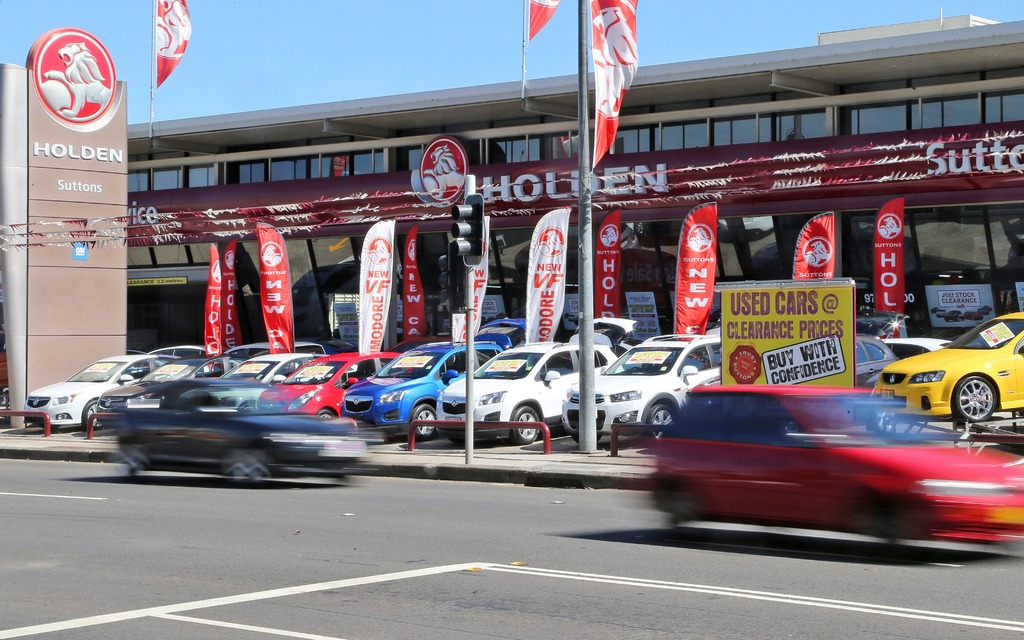General Motors Will End Holden Production in Australia

GM will end production of Holden vehicles in Australia, the company said in a press release. It was the last action by outgoing CEO Dan Akerson who is being replaced by Mary Barra.
Holden was founded in 1856 as a manufacturer of saddles. In 1908 it started making automobiles and eventually became a GM subsidiary in 1931.
Read also
Holden has always had somewhat of a cult following in North America due to the fact that many of their models are more performance-oriented than their North American counterparts.
Read the press release below:
DETROIT – As part of its ongoing actions to decisively address the performance of its global operations, General Motors today announced it would transition to a national sales company in Australia and New Zealand. The company also said it would discontinue vehicle and engine manufacturing and significantly reduce its engineering operations in Australia by the end of 2017.
"We are completely dedicated to strengthening our global operations while meeting the needs of our customers," said GM Chairman and CEO Dan Akerson. "The decision to end manufacturing in Australia reflects the perfect storm of negative influences the automotive industry faces in the country, including the sustained strength of the Australian dollar, high cost of production, small domestic market and arguably the most competitive and fragmented auto market in the world." As a result of the company's actions, approximately 2,900 positions will be impacted over the next four years. This will comprise 1,600 from the Elizabeth vehicle manufacturing plant and approximately 1,300 from Holden's Victorian workforce. Holden will continue to have a significant presence in Australia beyond 2017, comprising a national sales company, a national parts distribution centre and a global design studio. GM Holden Chairman and Managing Director Mike Devereux said an important priority over the next four years would be to ensure the best possible transition for workers in South Australia and Victoria. "This has been a difficult decision given Holden's long and proud history of building vehicles in Australia," said Devereux. "We are dedicated to working with our teams, unions and the local communities, along with the federal and state governments, to support our people." The sale and service of Holden vehicles will be unaffected by this announcement and will continue through the extensive network of Holden dealers across Australia and New Zealand. Warranty terms and spare parts availability will remain unchanged. "GM remains committed to the automotive industry in Australia and New Zealand. We recognize the need for change and understand the government's point of view. Moving forward, our business model will change significantly however, GM Holden will remain an integral part of its communities and an important employer both directly and through our dealers," Devereux said. Since 2001, the Australian dollar has risen from US$0.50 to as high as US$1.10 and from as low as 47 to as high as 79 on the Trade Weighted Index. The Australian automotive industry is heavily trade exposed. The appreciation of the currency alone means that at the Australian dollar's peak, making things in Australia was 65 percent more expensive compared to just a decade earlier.
With the decision to discontinue vehicle and engine manufacturing in Australia by the end of 2017, GM expects to record pre-tax charges of $400 million to $600 million in the fourth quarter of 2013. The charges would consist of approximately $300 million to $500 million for non-cash asset impairment charges including property, plant and equipment and approximately $100 million for cash payment of exit-related costs including certain employee severance related costs. Additional charges are expected to be incurred through 2017 for incremental future cash payments of employee severance once negotiations of the amount are completed with the employees' union. The asset impairment charges will be considered special for EBIT-adjusted reporting purposes.








